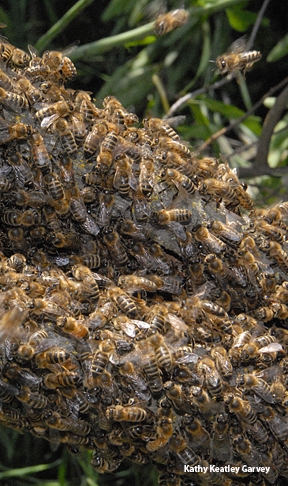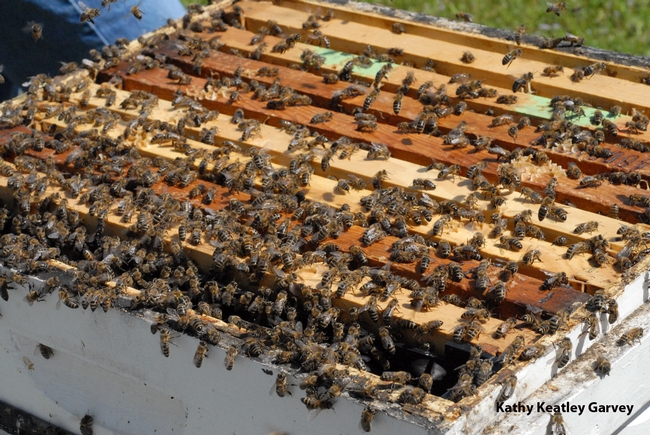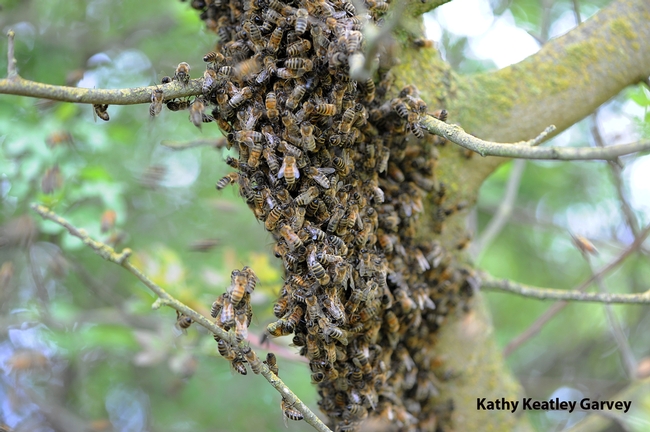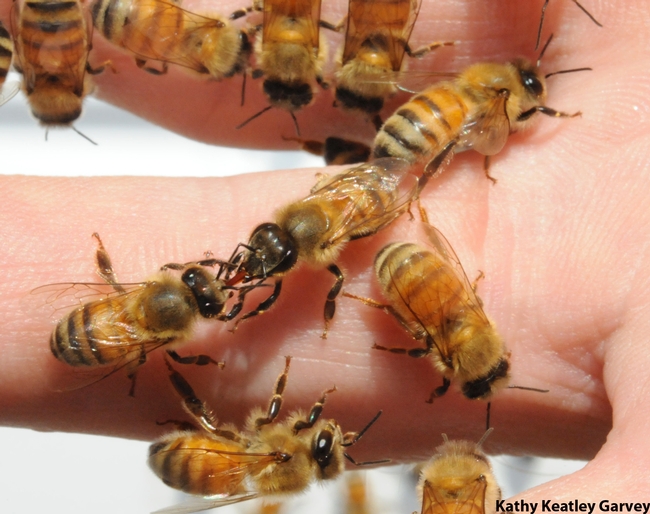
Extension apiculturist Eric Mussen of the UC Davis Department of Entomology was quoted in a news story published today about a bee swarm on a Stockton ballfield.
"It came from over the center-field wall during the top of the fourth inning, a dark cloud headed straight for home plate," wrote Stockton Record staff writer Alex Breitler. "Bees. Perhaps 20,000 of them."
Breitler related that "players dived into the dirt or spring for the dugout, while the public address announcer asked the crowd to stay calm."
These weren't Africanized bees. They were European honey bees. But the buzzing apparently scared a lot of people.
Mussen explained to the news reporter why swarms occur: a honey bee colony grows so large that the queen takes off with half of the bees, leaving her hive to a daughter queen.
"When the bees are swarming," Mussen told the reporter, "it's about the craziest thing you ever saw. There's this big mass of bees moving back and forth, up and down, forward and backward."
When bees swarm, they're following their leaders or scouts, who are seeking a new home for the colony. (Read Thomas Seeley's The Honeybee Democracy.)
Often bee swarms move along in a couple of hours or a couple of days.
The bee swarm occurred on Sunday.
What happened next probably disgusted a lot of people, especially beekeepers and others who are trying to help the bees.
"The bees were still there the next morning," Breiter related. "With another game in a matter of hours, the team took action Monday."
Someone called an exterminator who "zapped them" dead.
All 20,000 of them. No more pollination services or honey producers for these bees.
As an aside, if you encounter a bee swarm, you can contact your local beekeeping association to collect the swarm. The UC Davis Department of Entomology maintains a list of California beekeeping groups and state beekeeping associations on its Bee Biology Program's website. Indeed, we in the UC Davis Department of Entomology frequently field calls about bee swarms. Three came in over the last couple of days. Each time a beekeeper came out and gratefully collected them.
Almost all of the calls we receive are prefaced with "I know that the bee population is declining and I don't want them killed. Do you know of someone who could come out and get them?"
Unfortunately, some call a exterminator. Me thinks that a beekeeper could arrive as quickly as an exterminator.
Attached Images:

Honey bees ready to swarm at the Harry H. Laidlaw Jr. Honey Bee Research Facility at UC Davis. (Photo by Kathy Keatley Garvey)

Bee swarm in a tree at the Harry H. Laidlaw Jr. Honey Bee Research Facility at UC Davis. (Photo by Kathy Keatley Garvey)

Honey bees in a 2008 swarm feed each other on the hand of Eric Mussen, UC Davis. (Photo by Kathy Keatley Garvey)